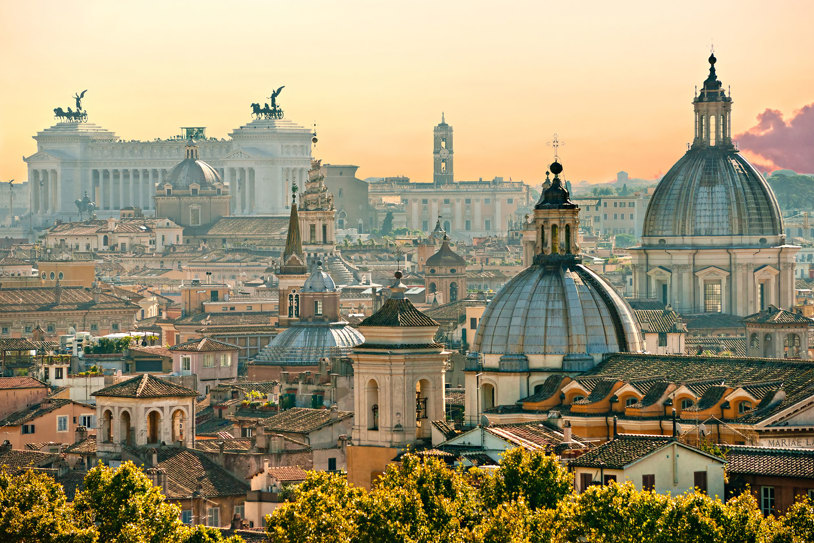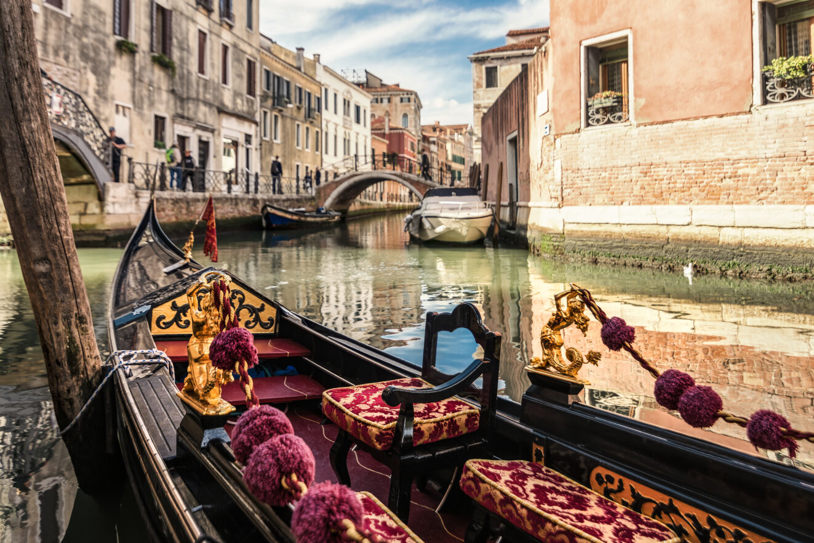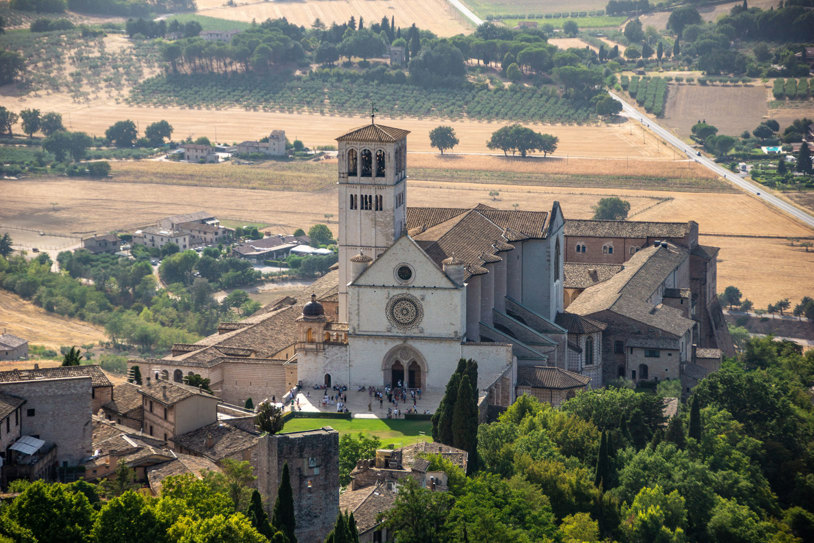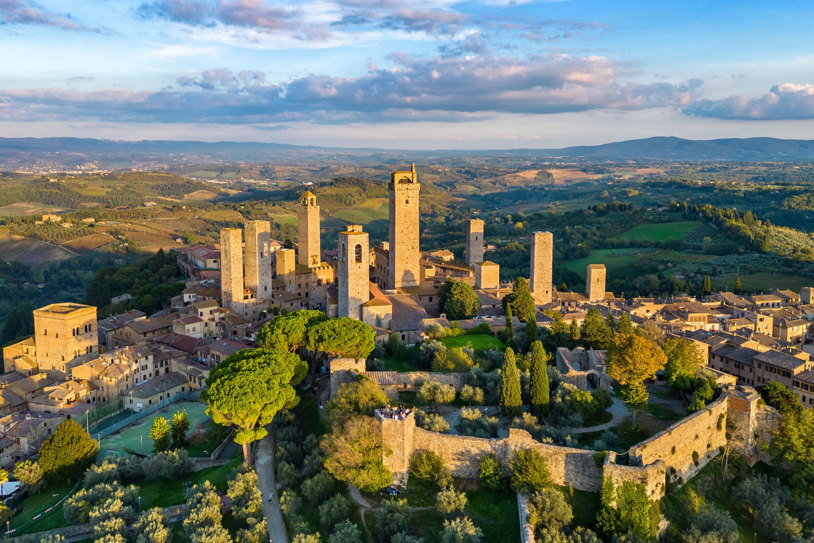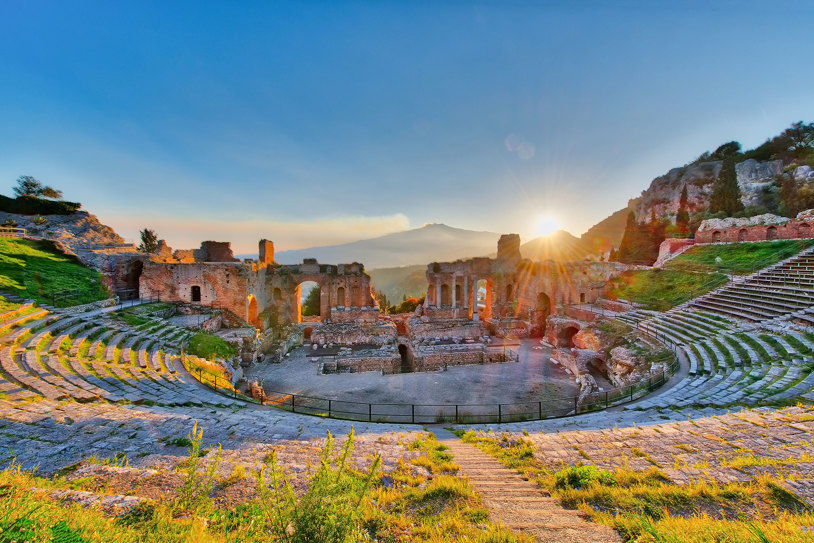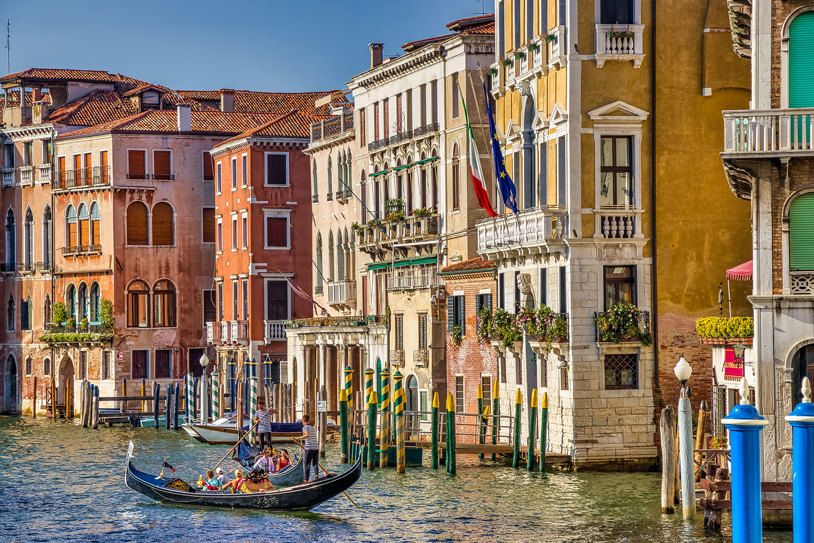If you've never been to Italy and had a glass of wine in Tuscany, add it to your bucket list.
A Beginner's Guide
to Italian Wine

Ah, Italy: the picturesque hills of Tuscany and the cantering of gondoliers in Venice. It’s no wonder this romantic country holds so much allure and wonder for travelers around the globe. And, just like so many incredible locations, experiencing the local food and drink scene is something that makes any trip here even more memorable and immersive. Trying the pasta parmigiana is a given in Italy, but what about the wines? Even if you’re not a regular drinker, wine in Italy is something you should absolutely surrender to during your travels.
Italian Wine Designations
Before we jump into specifics, we should cover a few important classifications that govern Italian wine production. Beginning in the 1960s, the government established criteria to protect the authenticity of the country’s wines. You’ll probably see labels on the necks of Italian wine bottles that indicate their designation.
DOC Wines
There are about 330 Italian wines that are designated DOC. DOC wines, Denominazione di Origine Controllata - "Denomination of Controlled Origin," are from a narrowly defined area and meet very specific requirements.
DOCG Wines
There are only 75 wines designated as DOCG, Denominazione di Origine Controllata e Garantita "Denomination of Controlled and Guaranteed Origin." These wines meet the strictest criteria regarding production techniques, types of grapes, alcohol content, aging, and taste.
IGT Wines
IGT wines are Indicazione Geografica Tipica, "Wine Typical of a Region," and include all producers that don't meet the above criteria but are still crafting excellent wines. You don't often see a label for IGT wines.
VdT Wines
Wines designated as VdT, Vino da Tavola "Table Wine," are bottles that have no mention of the grape type and vintage, and have very few quality requirements. It's very rare to see a wine labeled with VdT.
The Top 6 Italian Wines You Should Know
Barolo and Barbaresco
Produced in the Piedmont region of northern Italy from Nebbiolo grapes, these rich, full-bodied reds age extremely well. Barbaresco is slightly lighter and has a shorter aging requirement than Barolo.
Brunello di Montalcino
Renowned Tuscan wine made completely from Sangiovese grapes. Dark in color with strong red fruit flavors and savory, herbal notes.
Chianti
A world-famous Tuscan blend made with at least 80% Sangiovese grapes. Its tart cherry flavor and high acidity pair well with classic rich Italian dishes.
Prosecco
This parkling wine is typically produced in the Veneto region. Enjoy a refreshing glass with appetizers to start your meal.
Super Tuscans
A family of popular Tuscan red wines that don’t adhere to DOC and DOCG blending rules – more on that below.
Wine Regions of Italy
Much like pizza in New York City differs from pizza in Chicago, wine from one Italian region can be vastly different from another region. While most regions produce high-quality wine, understanding a bit about the regions, and how they influence the grapes, is key to a deeper appreciation of the glass of wine in front of you.
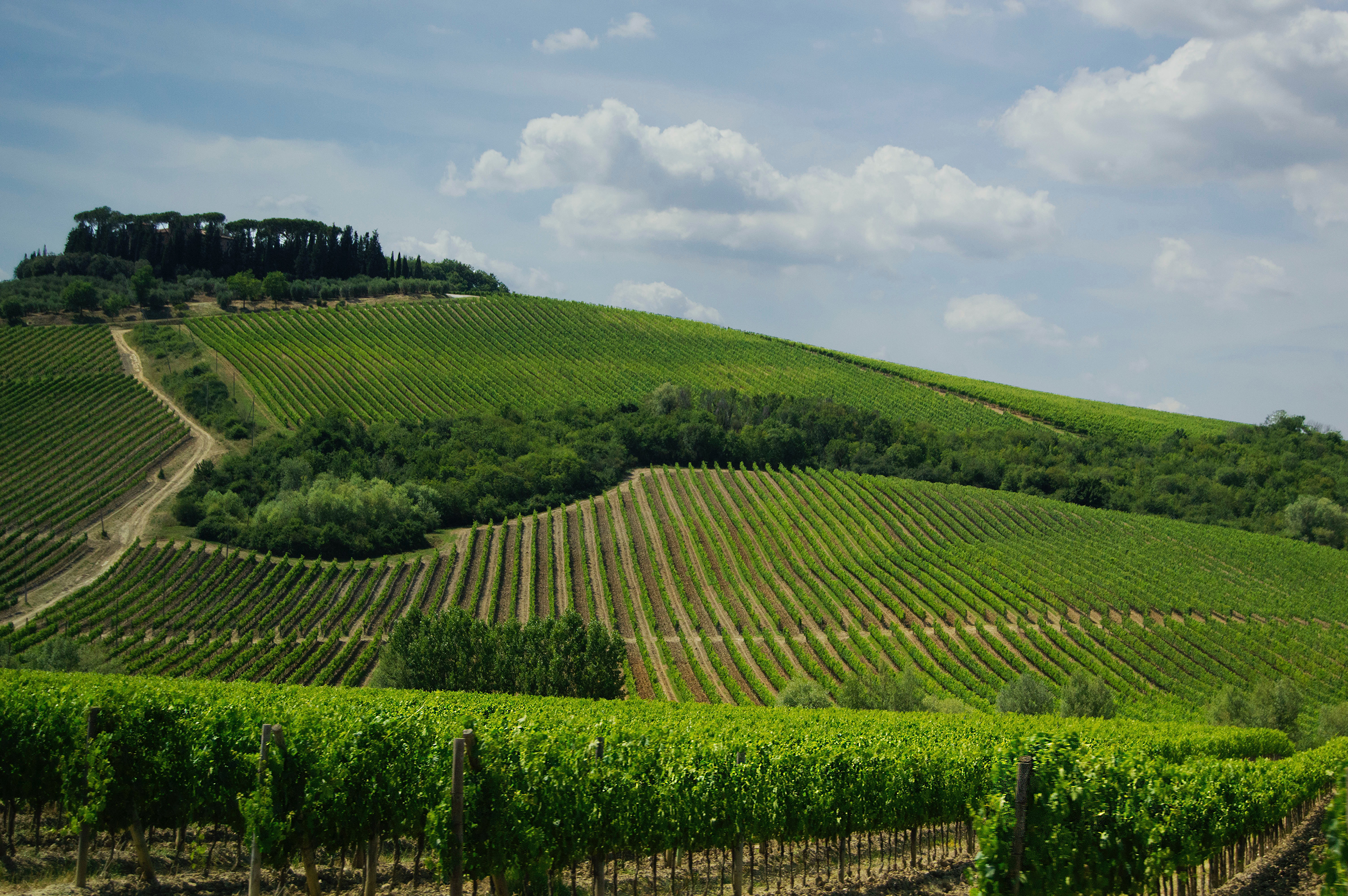
In total, Italy boasts 20 separate wine regions. The regions have less to do with temperature and soil conditions than they do with political boundaries and former dividing lines between Italy’s loose collections of states. With a production second only to France, each of the twenty regions produces wine, though each is subject to different labeling and winemaking laws. It is these laws that impact which wines areas are best in each region.
Wine Seasons in Italy
The next thing to know before ordering wine is to understand the pressing process and the wine seasons. The same grape can produce two entirely different flavors and aroma palates based on when it is pressed and fermented. The wine seasons are generally referred to as “pressings” and broken into two halves - first, or “early” pressings, and late pressing.
A major part of a wine’s taste is determined by when the grapes are picked and crushed. While all grapes produced for wine have a sweeter taste than table grapes, allowing the grapes to mature on the vine a bit later into the season, a “late pressing label” generally amounts to a sweeter wine like a Riesling. Late-season grapes are left on the vine longer than normal in order to naturally dehydrate and increase sugar concentration. Sometimes called “ice wines” in countries where the grapes can freeze on the vine, these dessert wines are often enjoyed after dinner in place of a dessert.
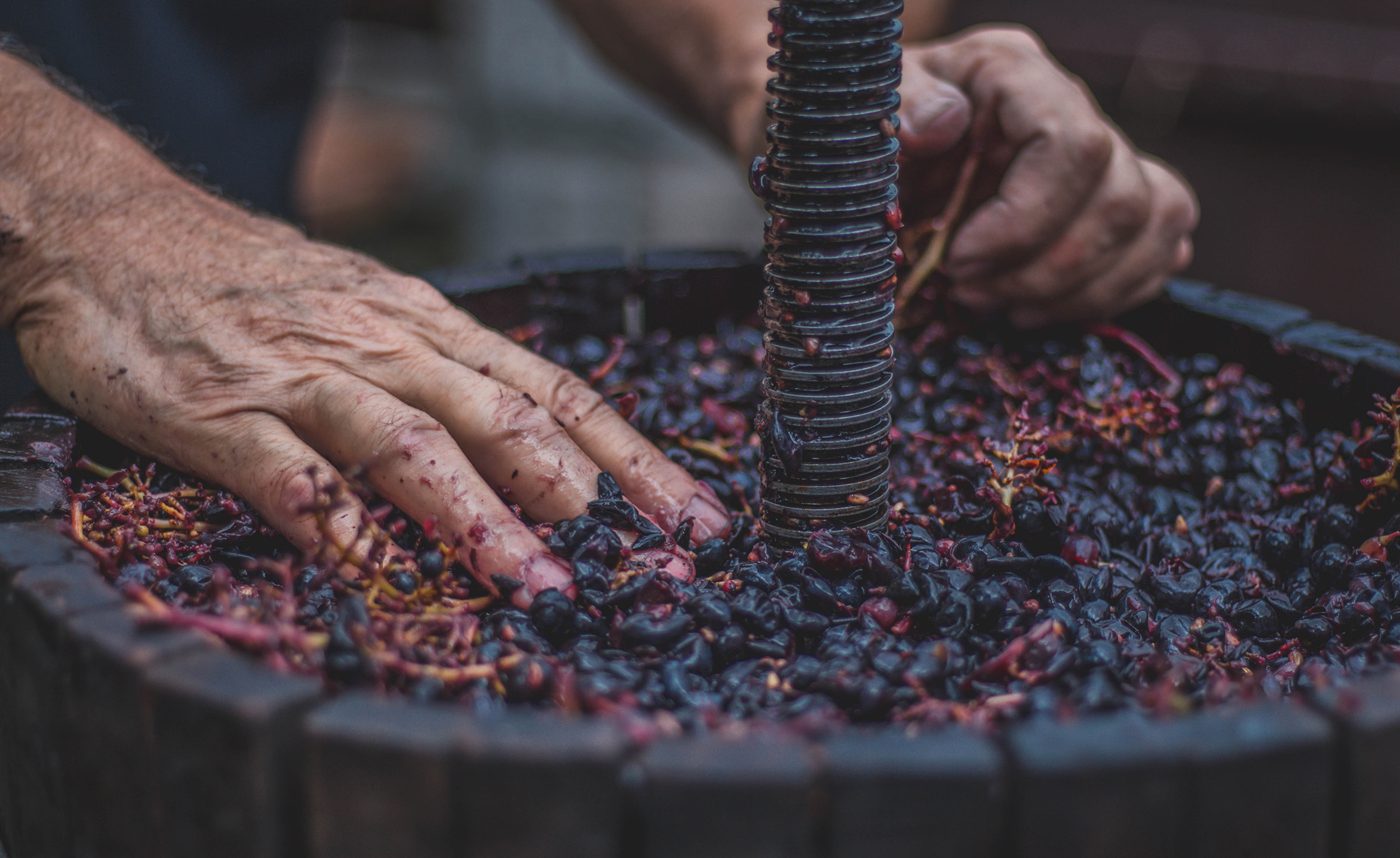
Perhaps the best time to plan a trip to Italy, if traveling for a wine experience, is during the three-month “crush season.” In the northern hemisphere, which includes Italy, the crushing season runs from August through October. During this time the weather has started to cool, grapes are in full bloom everywhere, and there is a spirit of excitement in the air around the wineries.
A Brief History of Wine in Italy
Italian wine is not a new fad. Unlike places like Australia, where vineyards are just starting to gain notoriety, Italian vineyards have been producing many of the world's best wines for more than four centuries. Grapes grow easily here, and wine production is natural. In fact, according to some historical accounts, by the time the ancient Greeks arrived in Italy, the wine was so prevalent in society and custom that they first named the land "Oenotria" meaning "land of wine."
Early References of Wine in Italy
The earliest references to wine in Italian culture connect to early leaders taking a great interest in winemaking. First, the Etruscans and later the Romans would show keen interest and particular ability in harvesting and fermenting grapes. The wine was so influential over the Romans that they even celebrated a god named Bacchus. Festivals held in his name ultimately became so rowdy that the Roman state had to ban them!
Catholicism and Wine in Italy
Wine continued to dig deep roots in Italian culture with the rise of Catholicism. In this religion, wine was a sacrament, directly communicating with God through consumption. The Church provided that blessed wine signified the blood of Christ, and consuming holy wine had the power to pardon the faithful from their sins.
The Great Wine Blight of the 1800s in Italy
In the second half of the 19th century, the vineyards of Northern Europe would fall victim to a wine louse from the New World. During the 15 years of blight, wine production in France fell by almost 75%. While not as heavily affected, the infestation in Italy destroyed fields and threatened to change the country's entrenched relationship with wine. Concerned with losing the economical windfall wine had long provided, replanting efforts focused on the size of a vineyard instead of the quality of grape it produced. These more extensive vineyards led to some of the more affordable, low-cost table wines now readily available.
Eventually, in the 1960s, the government would step in to try and correct the quality issues with Italy's vineyards to restore them to their former prestige. Laws and regulations passed, marking what is known as Italy's modern winemaking movement. Since that time, the variety and quality of Italian wines surged, making wines from this country among the most desired in the world. Many grapes used to make specific wines are grown only in Italy.
As you can see, wine has deep roots in Italian culture and history and is a bright star in their economic future. Wine is a central offering to Italians, and experiencing wine in Italy is akin to having a beer in Germany.



